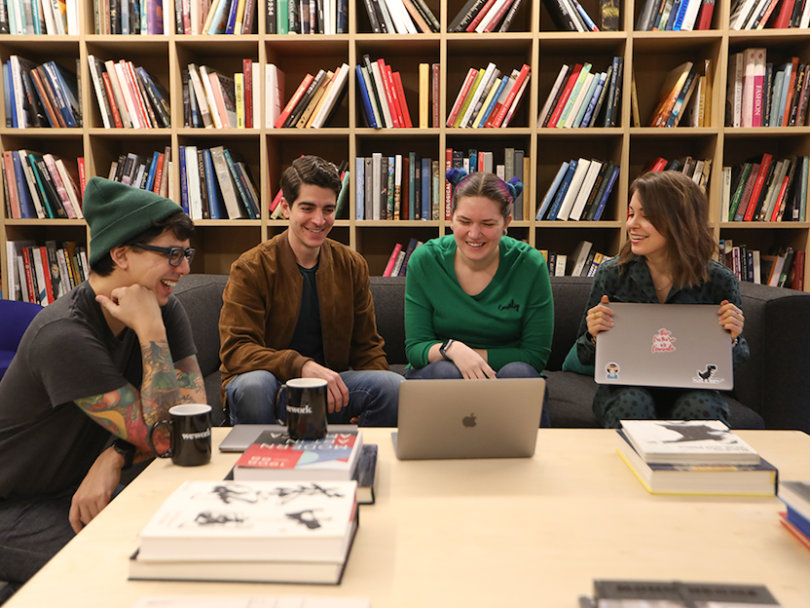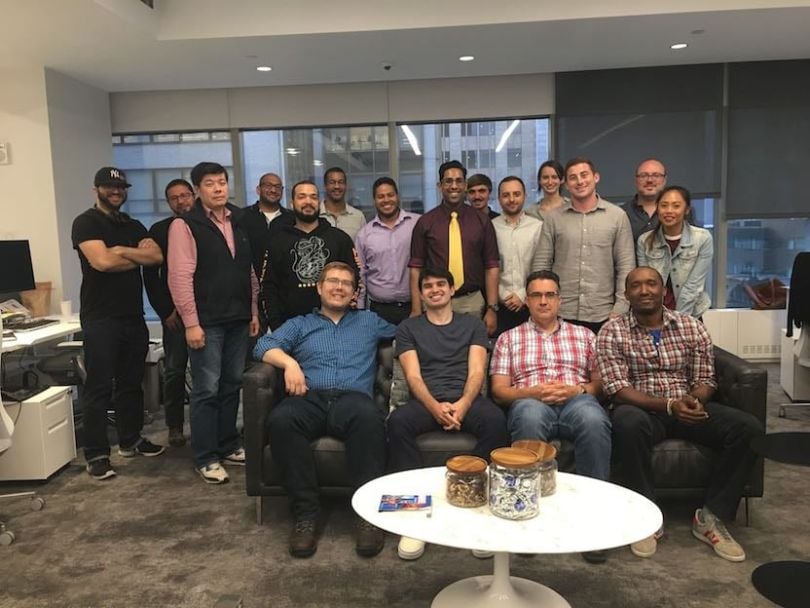Engineers are tasked with the responsibility of not only keeping up with tech trends, but also staying ahead of them. In a market as competitive as NYC, that’s no easy task. We spoke with professionals at five local tech companies who shared tips for anticipating what’s hot in the industry and how to beat others to it.

Learning is built into WeWork’s company culture. Florent Cailliau, global head of pricing and revenue optimization for The We Company, explained the concept of “deep dives,” which give employees the chance to make significant changes each month.
Tech moves fast. How do you stay ahead of the curve as a business?
The most impactful part of our strategy to stay ahead of the curve is to hire people with a passion for learning. Within the technology team at WeWork, we are working on novel, challenging projects that involve both the physical and digital worlds. In order to solve these problems, we must be able to consistently push our thinking, which we do through informal and formal discussions and trainings. For example, my team holds monthly learning “deep dives,” where we dig into one topic to come up with creative solutions in order to challenge our current approach. We also provide a variety of training options ranging from online courses to specialist courses at top-tier universities, as well as attendance at key industry and function conferences for data scientists, product managers, and software engineers alike.
What new technologies/tools/trends are you excited about or eyeing for future initiatives?
Our global fleet of buildings provide us with an incredible amount of data around what makes a new market suitable for a WeWork location and which levers to use to ensure each building is optimally run. I am very excited about predictive modeling and artificial intelligence capabilities that use this data. They will help us further manage and optimize our supply and demand decisions.

CLEAR, an identity platform that lets people use their biometric features as a method of identification, has made significant improvements to their technology since being founded in 2010. CTO Rob Wisniewski explained how it’s the company’s dedication to tech innovation that’s propelled them forward.
Tech moves fast. How do you stay ahead of the curve as a business?
We have two important tenets: The first is modern system design and deployment. Continuous integration and deployment, containerization, and more specific patterns like blue-green deployment and event-driven architecture, when done right, create a freedom to adopt, parallelize and experiment in a way that is vastly greater than where the industry was even 10 years ago. This is also reflected in our approach to hiring engineers, which we characterize as “cloud native” rather than just Java engineer, back-end engineer, etc. Additionally, we fail fast.
Early on at CLEAR, the enrollment process required multiple forms of identification, and members needed a smart card in order to use CLEAR. This meant that members had to interact with CLEAR up to three times before they could actually enjoy the experience. In 2015, we made some significant changes to our platform, including the ability to prove identity with just one government ID, and we moved the matching to the cloud, creating a truly token-less experience to prove that you’re you. The basic ideas have remained the same but the experience, through technology, has improved vastly.
What new technologies/tools/trends are you excited about or eyeing for future initiatives?
New biometric technologies would require its own article, but we’re amazed at what’s around the corner. Separately, we’re always listening intently to new features in the public cloud space. Managed services allow cloud providers to do what they’re best at while you focus on your business.

Covera Health uses data analytics and provider collaboration to build radiology programs for large employers. Data Scientist Grant Langseth walked us through the ways his team stays ahead of technology in the healthcare industry.
Tech moves fast. How do you stay ahead of the curve as a business?
We have developed a rigorous data collection and validation cycle that allows us to develop an enhanced map of reality unique to our organization. In tandem with regular method validation sessions with the nation’s top medical professionals, we’ve been able to extend our insights far beyond what is available in typical claims datasets. The composite of data we’ve collected, including standardized quality assessment reviews of patient studies, has given us the ability to measure radiology care quality, as well as its impact on patient populations, at scale in an entirely new way.
What new technologies/tools/trends are you excited about or eyeing for future initiatives?
There are multiple initiatives currently underway that use the latest methods in computer vision and natural language processing to analyze our large dataset of medical images and reports for insight generation on both an exam-level and in aggregate. It’s amazing what you can train a computer to do these days, and at Covera Health, we are excited to be leading the charge in this new wave of innovation.
Dating app Hinge is dedicated to providing a service that’s so streamlined that users forget they’re interacting with a form of technology. CTO Ben Celebicic explained how his team is implementing certain features that keep users focused on “finding their soulmate.”
Tech moves fast. How do you stay ahead of the curve as a business?
Hinge is a dating app that is “designed to be deleted.” Our mission is to create meaningful connections that will eventually lead to dates. With that in mind, the engineering goal is to provide technology that does not distract users from using our product and meeting in real life. We accomplish that by building and continually improving our recommendation engine, bad actors recognition, and removal tools while scaling our systems in order to support our high growth. In the last couple of years, we went through multiple iterations of machine learning algorithms and migrated our entire backend infrastructure from Python-based monolithic architecture to Golang microservices architecture. We are all very passionate about providing the simplest possible technology solution that is fast and stable so our users can concentrate on finding their soulmate.
What new technologies/tools/trends are you excited about or eyeing for future initiatives?
Artificial intelligence has been around for a long time, but it is very hard and costly to apply in most real-life applications and quite inaccessible to many of us who are not extensively trained in data science. With the latest developments from companies such as Google, Amazon and Apple, different AI technologies are slowly becoming much simpler to use, implement and integrate within different industries. What I am most excited about is seeing how those developments will help advance the society.
EquityZen, a marketplace for private company investments, looks to their engineers to stay ahead of fintech trends. Senior Director of Engineering Shanon Levenherz explained more.
Tech moves fast. How do you stay ahead of the curve as a business?
Our engineers are responsible for technical design and discovery. Through this process, we collectively keep up with changes in the ecosystem and strive for solutions which yield platform-wide benefits. One example is GraphQL, which not only simplified the front-end data layer, but reduced the complexity of the back-end architecture and eliminated over-fetching via the schema-based queries.
What new technologies/tools/trends are you excited about or eyeing for future initiatives?
While we're leveraging new technologies across the board, I'm most excited about our use of data science to drive decisions across the platform. We've replaced many human decisions in our business, which enables team members to focus on new and exciting strategic initiatives.






